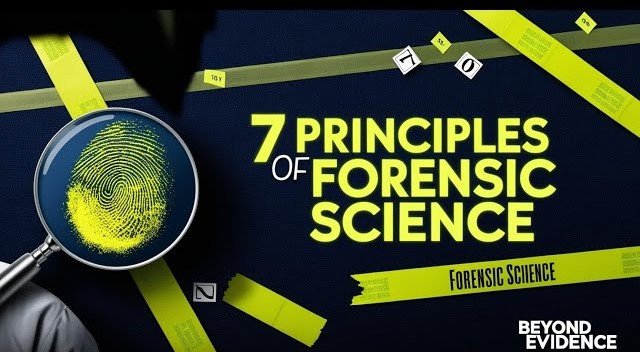"Unlocking Crime Mysteries: The Seven Principles of Forensics"
During criminal investigations, forensic professionals can preserve scientific objectivity, accuracy, and integrity by adhering to the seven principles of forensic science. These guidelines guarantee that evidence is gathered, examined, and interpreted in a way that is trustworthy and acceptable in court.

Here are the Seven Principles of Forensic Science:
| Principle | Key Idea | Example |
|---|---|---|
| Law of Individuality | Everything is unique | Fingerprint match |
| Law of Progressive Change | All things change over time | Body decomposition |
| Law of Comparison | Only like should be compared | Blood to blood |
| Law of Analysis | The whole understood by its parts | Paint chip analysis |
| Law of Circumstantial Facts | Facts are objective, unlike people | Weapon with fingerprints |
| Law of Probability | Forensic results are probabilistic | DNA match probability |
| Law of Exchange | Contact leaves trace | Hair left at crime scene |
1. Law of Individuality
Every object, natural or man-made, has a unique identity
Not even identical twins or manufactured objects are exactly alike in the world. This distinctiveness is what forensic specialists use to link fingerprints, bullets, writings, DNA, and other items to a particular source. For instance, a fingerprint discovered at a crime scene can be identified as belonging to a single person.
2. Law of Progressive Change
Everything changes over time
Physical and biological evidence can change or deteriorate. The integrity of evidence can be impacted by time, environment and handling (e.g., fading of prints, decomposition of a body).
3. Principle of Comparison
Only like can be compared with like
The only way to compare evidence is using a recognised reference or standard. For instance, it is necessary to compare the suspect's shoe print with one that was discovered at the scene.
4. Principle of Analysis
The analysis can be no better than the sample analyzed
Only standardised, accurate, and trustworthy methods should be employed. guarantees the forensic results' objectivity and reliability.
5. Law of Circumstantial Facts
Facts do not lie, but witnesses can
Eyewitness reports are not as trustworthy as physical proof. When read correctly, circumstantial evidence frequently reveals the truth more precisely.
6. Principle of Probability
Forensic conclusions are based on probability, not certainty
In forensic science, absolute assurance is uncommon. To ensure scientific accuracy, results are presented as likelihood or probability.
7. Principle of Exchange (Locard’s Exchange Principle)
Whenever two objects come into contact, there is always an exchange of materials
Praposed by Dr Edmond Locard. Hair, fibres, skin cells, and other items are always brought into the crime scene by criminals and taken away by them. This serves as the foundation for trace evidence.
Follow cyberdeepakyadav.com on
Facebook, Twitter, LinkedIn, Instagram, and YouTube
What's Your Reaction?























